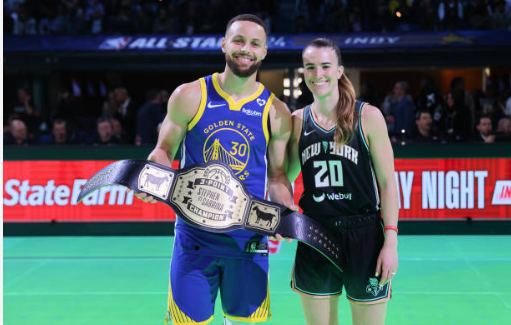
| To fully understand the pay disparity between NBA and WNBA players, let’s look at the pay difference between NBA and WNBA players below: Stephen Curry $55,761,217 Nikola Jokic $51,415,938 Joel Embiid $51,415,938 Kevin Durant $51,179,020 |
| Jackie Young $252,420 Jewell Loyd $245,508 Kahleah $245,059 Arika Ogunwobale $241,984 Diana Taurasi $234,936 Natasha Howard $224,675 |
The wage gap between NBA and WNBA players is a multifaceted issue influenced by various factors:
Revenue Generation: The NBA significantly outpaces the WNBA in revenue production. NBA games draw larger crowds, both in-person and through television, resulting in increased income from ticket sales, sponsorships, and broadcasting rights. Although the WNBA is experiencing a rise in popularity, it has not yet achieved comparable financial success.
Sponsorship and Media Agreements: The NBA enjoys considerable sponsorship and media agreements, which contribute to higher player salaries. In contrast, the WNBA has fewer sponsorship opportunities and smaller media contracts, limiting its capacity to provide competitive salaries.
Market Size and Audience: The NBA boasts a global fan base and a strong market presence, whereas the WNBA’s audience is comparatively smaller. This disparity in market size directly impacts overall revenue and, in turn, salary structures.
League History and Growth: Established in 1946, the NBA has had decades to cultivate its brand and financial stability. Conversely, the WNBA, founded in 1996, is still in the process of expanding its financial framework and market visibility.
Collective Bargaining Agreements: The NBA and WNBA operate under different collective bargaining agreements. The NBA players’ union has successfully negotiated substantial salaries and benefits, largely due to the league’s significant revenue. Historically, the WNBA’s collective bargaining agreements have yielded lower salaries, although recent advancements have been made.
Public and Media Exposure: The NBA benefits from greater media coverage and public interest, which enhances its financial success. While the WNBA is making progress, it still does not enjoy the same level of media attention and public engagement.
Efforts to rectify these disparities are ongoing. The WNBA has witnessed increases in player salaries and enhancements in working conditions in recent years, alongside a growing movement advocating for more equitable treatment as the league continues to broaden its influence.



